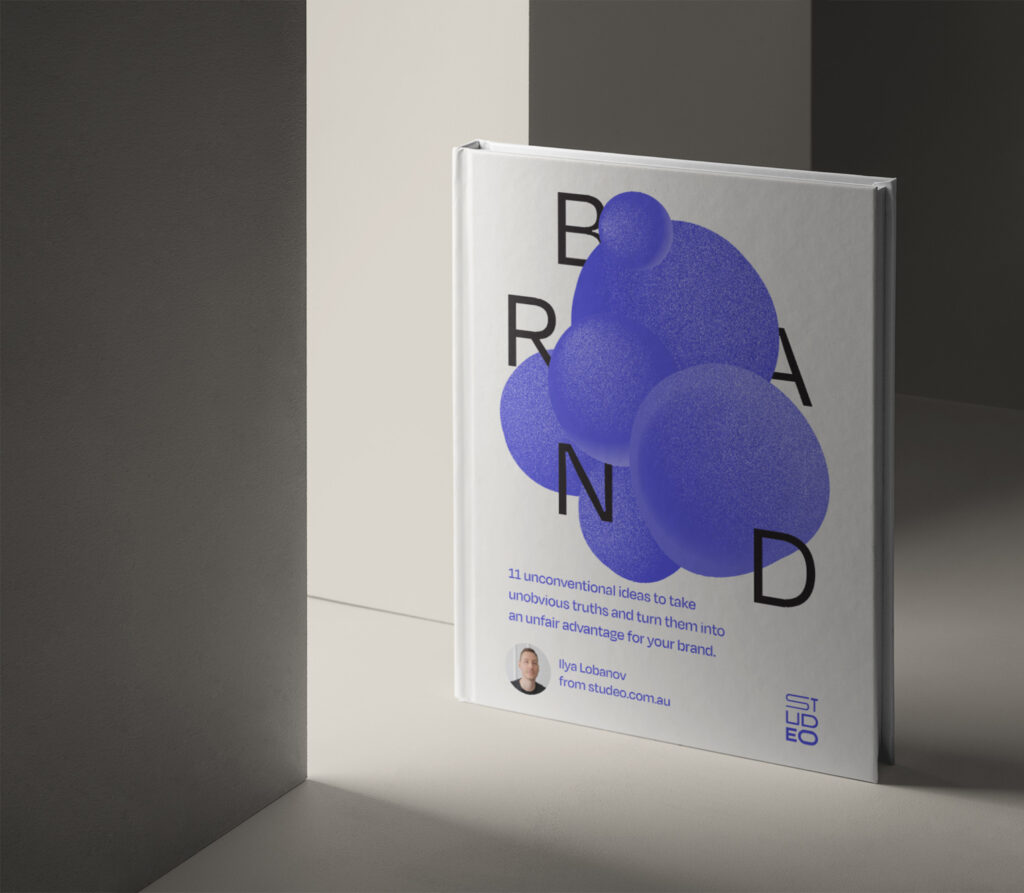If you occasionally stop by the insights section on studeo.com.au you will know that I tend to focus on writing thought-provoking pieces, covering branding, brand strategy, design, and creativity. ‘The top 10 so and so to become X’ isn’t typically the kind of thing you’ll find around here.
Having said that, one of the most frequent requests I get from designers wanting to dive deeper into brand strategy and strategic design is book recommendations.
I’m all about empowering you with additional insights. And books have been a huge resource in my own journey to becoming the (strategic) designer I am today. So I’m creating this list with the aspiration that it will help you to upskill as well. Plus also it will be an easier place to send people to whenever I get yet another book recommendation question.
I’ll preface this list by saying that not all books mentioned here are ‘brand strategy’ specific. And there’s a reason for that. To me, to think more strategically means having the ability to see the bigger picture. To be able to see the bigger picture often means having just enough knowledge about lots of different areas. That enables you to spot the gaps better when you’re talking to clients.
It’s much the same when you work as a creative director or another leader responsible for a cross-disciplined team. The shoes of that role can be much better filled by someone with a deep generalist makeup rather than a specialist. Hence why lots of books here are not JUST on brand strategy. Some are on building a business in general, others on marketing, a few on influence and communication skills, and more.
Let’s begin.
1 How to win Friends & Influence People
What?! A self-help book?!? Hear me out – Dale Carnegie’s books have made a massive impact on my development as a human being in general and as a creative. Many of the concepts in How to win Friends & Influence People were somewhat obvious and yet enlightening at the same time. I often return to the many notes and scribbles I’ve left in my copy, reminding myself of those timeless concepts taught. Although on the surface this particular book has very little to do with branding, the mindset shifts in interacting with others have enabled me to nurture better empathy, communication, negotiation, and influence skills. All crucial if you want to have your ideas be heard and implemented by clients, partners, and peers.
2 The 22 Immutable Laws of Marketing
As authors, Al Ries and Jack Trout argue, everything in nature has laws that most things adhere to, so why not marketing. Although I can’t say I agree with every idea in the book (a few things have changed since 1993), The 22 Immutable Laws of Marketing does provide a great snapshot of how marketing works. And if you want to get more into the world of brand strategy as a designer, you will definitely need to get fluent in marketing. That is if you want to be able to influence marketing managers and key decision-makers of a business. Not to mention, having the added insights to base your strategic recommendations on.
3 Positioning: The Battle for Your Mind
Since I’d already brought up Al Ries and Jack Trout, I might as well mention their other behemoth contribution to marketing – their book on Positioning. Many brand strategists I’ve spoken to who worked for the larger marketing and branding consultancies like Interbrand and Landor still use the ideas from the book as the foundation for their frameworks. The book is all about uncovering, defining, and communicating that one place that you can ‘own’ in consumers’ minds – positioning. A crucial skill to master for brand strategists, and one of the most critical components of my own brand strategy framework.
4 This is Marketing
While we are still on the topic of marketing (I wonder how many of you designer friends out there are rolling your eyes by now), we need to consider more up-to-date views on marketing as well. Like Seth Godin’s book, This is Marketing. Seth Godin’s concept of permission marketing is one of the reasons I started getting more interested in marketing in the first place. Up until that point, I’ve looked at marketing, on par with sales, as a sleazy one-to-many series of bombardments, ramming products down people’s throats. This is Marketing opened up a different perspective for me of how marketing can be a force for good and how it can be made more customer-centric.
5 Company of One
Paul Jarvis, the author of Company of One, is an entrepreneur with whom I really resonate. The premise of this book is that while many businesses tend to focus on quick growth, expansion, and revenue, there is an alternative way to business building. And that’s to create a more automated and profitable business that enables you to have more freedom and autonomy for the things that you love doing outside of your business. Staying intentionally small or finding ways to outsource, in order to keep business simple. This kind of perspective is what’s helped me to embrace concepts like MVP in launching my own business initiatives, products, and campaigns, as well as those of my clients.
6 The E-Myth Revisited
If you want to do a better job of getting into the shoes of your clients and understanding the challenges that many entrepreneurs and business owners face, whatever stage of a business they are at, then you’ll find The E-Myth Revisited by Michael E. Gerber really insightful. The book draws the distinction between working on your business and working in your business, showing how systems and processes can improve the businesses’ productivity and effectiveness. This kind of perspective can help you uncover and recommend solutions and opportunities beyond just logo and colours, once you have the chance to quiz your clients and experience how they run their businesses.
7 Designing Brand Identity
While I have mixed views on concepts like deliberate differentiation for brands (I think there’s a time and a place for that, but not a hard-set rule), I do think that Alina Wheeler’s Designing Brand Identity provides some great structure and process to follow for designing cohesive overarching brand identities. It also offers some very helpful perspectives on helping you change your mindset from ‘I’m just creating visuals’ to ‘how do I help create more value for my clients’ – something many designers I’ve spoken to still struggle with.
8 Good Strategy/Bad Strategy
Finally, a strategy book! Were you wondering if I’ll ever get to one in this list?! I’m always trying to see multiple perspectives in whatever I tackle, and the title of Richard Rumelt’s book Good Strategy, Bad Strategy immediately drew me in. I resonated with many concepts in the book, like needing to approach strategy in a more holistic way. Larger organisations and businesses tend to operate in silos and are managed in a chain-link manner, meaning that they can get stuck in a ‘low-effectiveness gear’. So if you’re dealing with a business like this, it will be difficult to have them implement and adopt your strategic recommendations if you’re a branding professional. Unless you find a way to address that with your client early.
9 Creative Strategy and the Business of Design
Another book that I knew was my kind of resource, directly from the title. In my own content here, as well as over on Instagram, I always talk about the importance for designers to develop their soft skills. Design skills will only get you so far. That’s mostly due to the fact that I see myself as an average designer, so I try to overcompensate by developing additional skills like negotiation, communication, and others so it balances out. Now imagine if you’re already an ace designer, who’s got the creativity part covered. What Douglas Davis will teach you in Creative Strategy and the Business of Design will empower you to gain the business skills and insight needed to be seen as a valued partner, not just a creative service provider.
10 Branding: In Five and a Half Steps
In Branding: In Five and a Half Steps Michael Johnson offers probably the most simplified branding process I have seen. And that’s great, actually. The thing is, there is a darker side to some brand strategists – overinflated egos. Hence the 75page strategy decks that are designed to stroke it, rather than provide something genuinely usable for their clients. Those decks tend to be filled with a lot of jargon, aspirational and ambiguous terminology, and language that’s hard to translate into anything actionable. And I think that’s largely because those strategists need those bulky processes, dozens of diagrams to illustrate the client’s brand values, and expensive-sounding terminology to justify their hefty fees. Instead, Michael Johnson offers a refreshingly simple take on branding, a field that is unfortunately full of pseudo-science.
Now over to you
If you enjoyed reading this article, consider signing up for the Studeo Insider, and receive more insights like this one. If you know someone who might enjoy this article, please share it. If you have any questions or would like a chat, please reach out via email or on Instagram, I’d love to hear from you!

